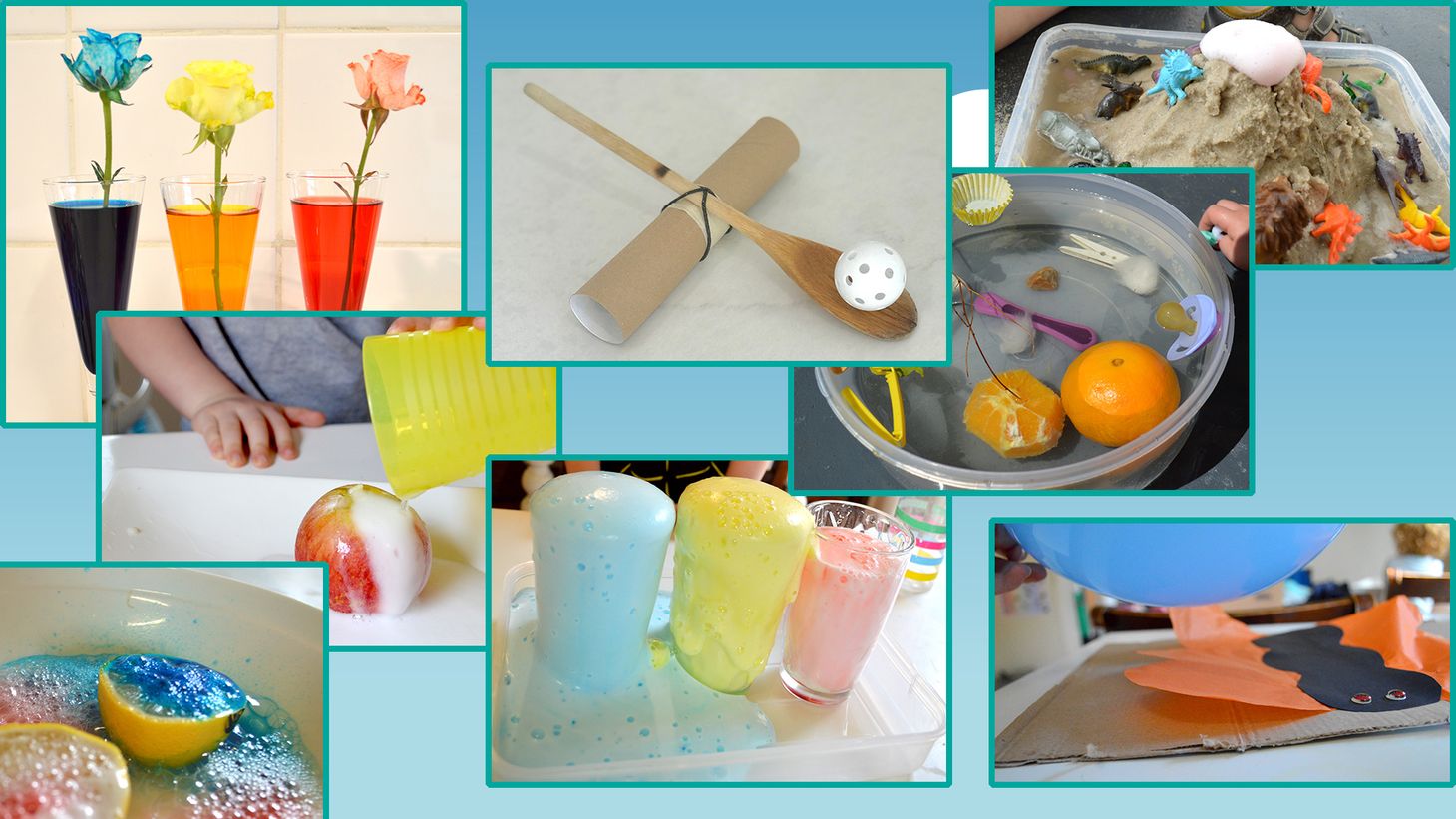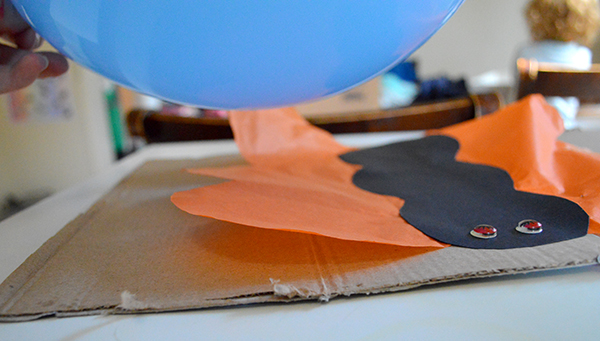Here are some science experiments for kids you can do at home—all using household items!
1. Volcanoes
(Suitable for kids 2–5 years)
Materials
- Baking soda
- Vinegar
- Optional: dishwashing detergent, food colouring, other items as per variations listed below
If you pour vinegar over baking soda, you will get a reaction. If you put a squirt of dishwashing liquid in with the vinegar, it will create a bigger and foamier reaction. And if you add colour, it makes it look a tad more awesome.
I have seen many variations of this volcano experiment, each quite impressive for children:
1. Cut the core out of an apple and add in the baking soda. Pour over the vinegar.
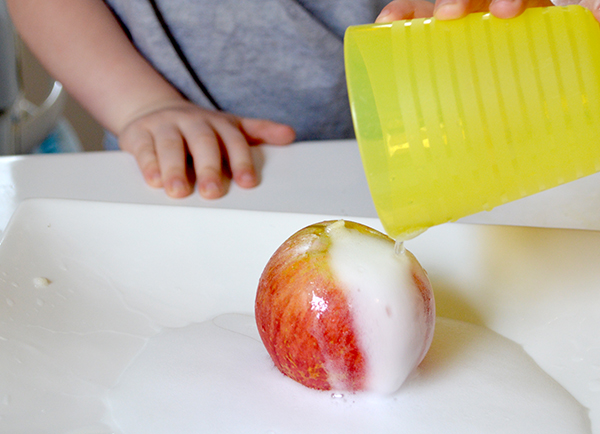
2. Cut a lemon in half and mush up the contents before adding the baking soda. In this one, you do not need vinegar; it is the citric acid in the lemon that reacts with baking soda. (Note: the reaction is a small fizzy one, not a massive bubbly one.)
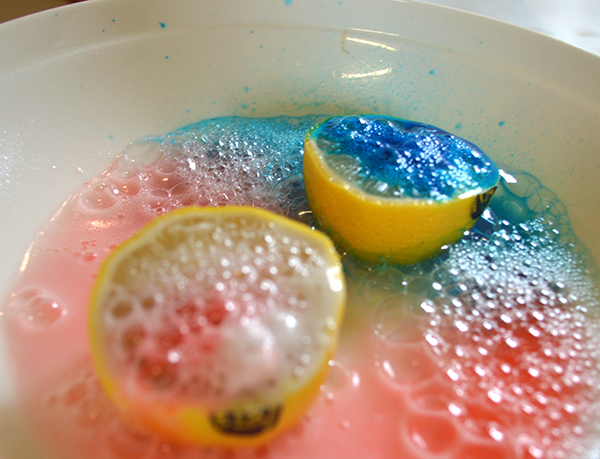
3. This is a favourite in our house: Get a number of clear glass cups and put baking soda in the bottom of each along with a drop of different food colouring. Now pour vinegar over each one and watch them froth over.
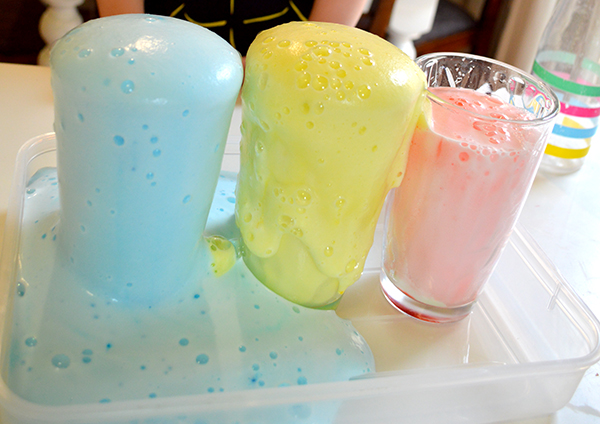
4. Another great idea is to put some baking soda in a bottle and bury it in a sandcastle. Now when you add the vinegar, it looks like a volcano.
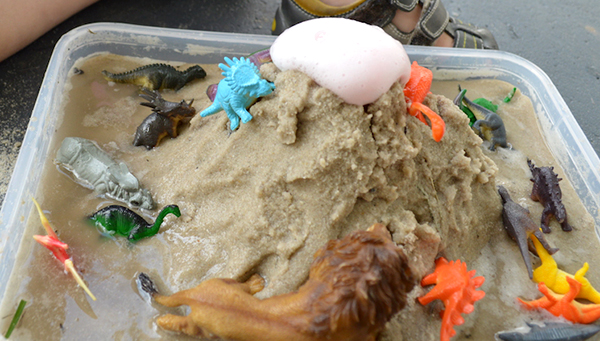
Kid-friendly explanation
When vinegar and baking soda mix, they undergo a reaction and make a gas (carbon dioxide). What you are doing in this experiment is watching the reaction occur and the gas being released.
2. Static butterfly
(Suitable for kids 3–5 years)
You know that shock that your child gets on the slide at the playground or from running around on the carpet? Well, here is a way to explore that concept further. Simply rub a balloon on a tissue paper butterfly and watch its wings flap.
Materials
- Tissue paper
- Balloon
- Arts and craft material to make the butterfly (optional)
Create a butterfly like the one pictured above using tissue paper and other craft items. Blow up a balloon and rub it in your hair to create an electric charge. Then hold it in front of the butterfly (making sure not to touch it), moving the balloon farther and closer, and watch the butterfly flap!
Yep, the kids loved making the butterfly’s wings move. But you know what was even more fun? Rubbing the balloon on your little sister’s hair and watching it stand up in the air! H.I.L.A.R.I.O.U.S!
Kid-friendly explanation
My child loves static electricity, from the carpet in our home to the slide at the playground. Every now and then he will get a shock that makes him giggle. But how do we explain this phenomenon?
This is a difficult one for preschoolers, and whilst not failproof, the best way that I have found to date is to explain the following three concepts:
- Every item is made of tiny, tiny particles that contain energy.
- When we rub one object against another (like a balloon against the tissue paper), one object passes on energy to another. As a result, it becomes charged, and the other item becomes the opposite charge.
- Opposites attract, so this opposite charge in each item makes them want to stick together.
3. The flower food
(Suitable for kids 2–5 years)
Quite simply, add water and a drop or two of food colouring to each vase (or cup). Add one white flower to each vase, and let nature take its course. Make sure that the stem of the flower is freshly cut to allow faster water uptake.
Before

After

Materials
- Water
- Vases
- Food colouring
- White flowers
Different flowers absorb water at different rates. The experiment could take one night or many nights. Roses really work well (I was surprised to see colour occurring in a matter of minutes!) You can also use celery.
Once they are coloured, expand upon the experiment by exploring what happens if you move the roses to another colour. You will end up exploring primary colour mixing too.
Kid-friendly explanation
Just like us, plants need water to survive. But plants drink their water from the soil; it travels through the roots and up its stem to the leaves and flowers. So when we put the cut flower in water, it starts drinking the water which travels up the stem and into the flower, causing it to change colour (due to the coloured water).
4. Sink or float?
(Suitable for kids 2–5 years)
Simply set up a bowl of water, grab some objects from around the home and explore what sinks and what floats.
Note: Please maintain constant supervision of young children around water.
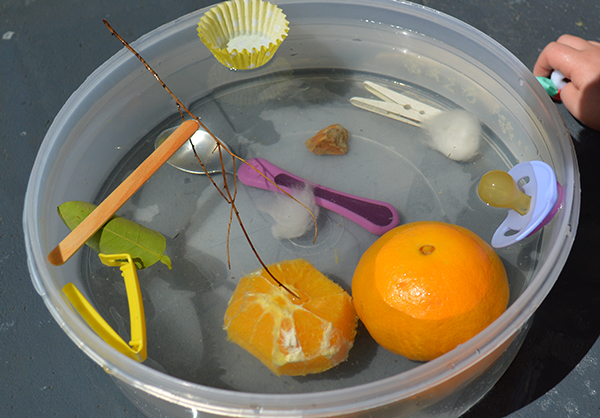
Materials
- Small bowl of water
- Assortment of objects that will either sink or float
Be sure to discuss with your child what they think will happen before you try this out. A good range of objects to include in the experiment are rocks, bottle tops, pegs, a feather, a leaf, a coin, a shell, plastic straw, soap or an icy pole stick. But the most interesting one is an orange. Try it with the skin on, then with the skin off.
Kid-friendly explanation
At the preschool level, it is difficult to explain buoyancy and density. I simply explain that all objects are made of very, very small particles. In some objects, these particles are packed closer together than in others, which makes them denser.
Denser items sink in water whereas less dense items float (it’s not about size!). In the case of the orange, the skin contains a whole heap of tiny air pockets. When the skin is taken off, this actually makes the orange denser to a point where it sinks.
5. Catapult
(Suitable for kids 3–5 years)
Build a catapult from a cardboard tube and wooden spoon and let loose.

Materials
- Wooden spoon
- Cardboard tube
- Paper
- String
Explore different (soft) materials to see what goes farther or higher. You could even experiment with how long the spoon is by replacing it with something different.
Kid-friendly explanation
When you push down on the wooden spoon handle, this causes the other end of the spoon to fly up and launch your paper in the air.
(There are a number of other catapults that you can build with elastic bands to have a discussion around stored and kinetic energy, but for my preschooler, I found that a simple explanation of cause and effect was enough).
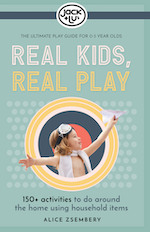
Extract from Real Kids, Real Play. Reprinted with permission.
How helpful was this article?
Click on a star to rate it!
5 / 5. 1
Be the first to rate this post!
Alice Zsembery
Related posts
Subscribe
Receive personalised articles from experts and wellness inspiration weekly!

